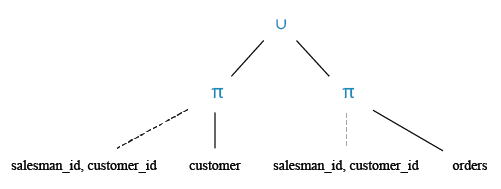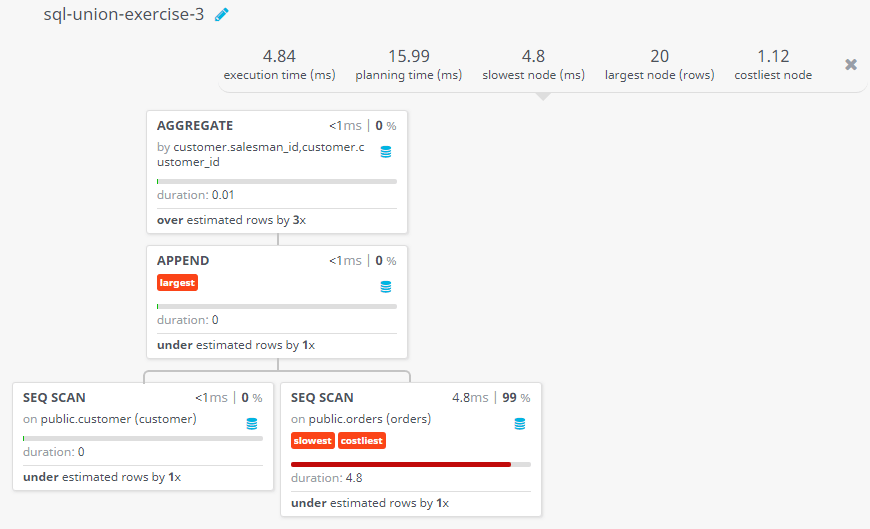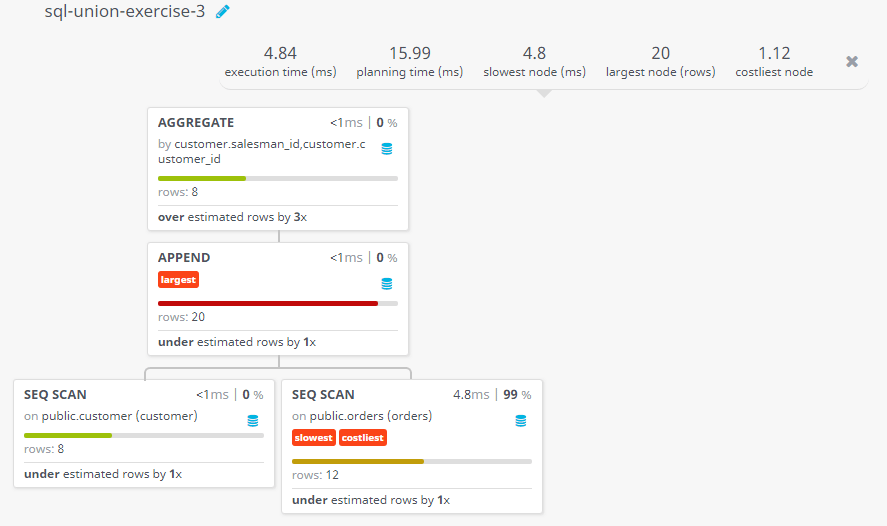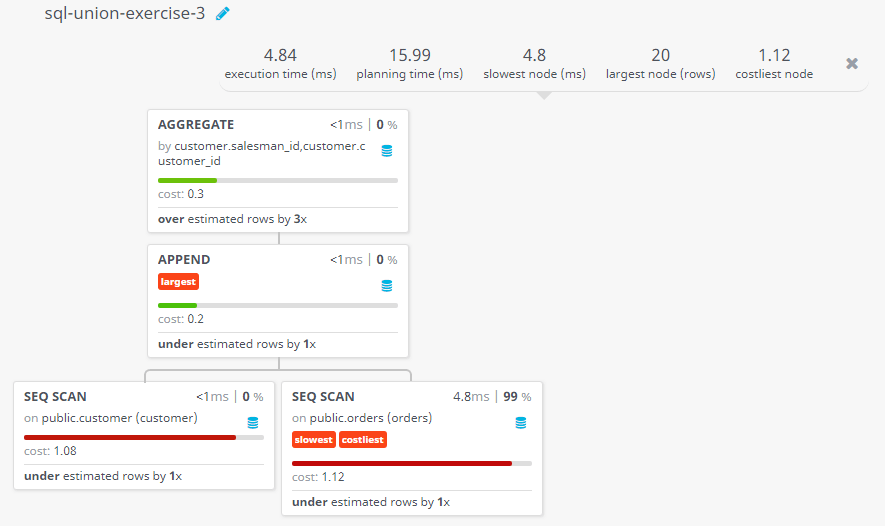SQL Exercises: Salesmen, customer involved in inventory management
3. From the following tables, write a SQL query to find all those salespeople and customers who are involved in the inventory management system. Return salesperson ID, customer ID.
Sample table: orders
Sample table: customer
Sample Solution:
-- Selecting specific columns (salesman_id, customer_id) from the 'customer' table
SELECT salesman_id, customer_id
-- Performing a UNION operation with the result set of a subquery that selects specific columns (salesman_id, customer_id) from the 'orders' table
FROM customer
UNION
(SELECT salesman_id, customer_id
-- Selecting specific columns (salesman_id, customer_id) from the 'orders' table
FROM orders)
Sample Output:
salesman_id customer_id 5005 3001 5007 3003 5001 3007 5002 3008 5006 3004 5003 3009 5001 3002 5002 3005
Code Explanation:
The said query in SQL which selects the distinct set of salesman IDs and customer IDs from two tables - customer and orders - and combines them using the UNION operator.
The UNION operator combines the results of two SELECT statements into a single table. It automatically removes any duplicate rows, so the resulting table will have a distinct set of salesman_id and customer_id pair.
Relational Algebra Expression:
Relational Algebra Tree:
Go to:
PREV : Display distinct salesman and their cities.
NEXT : Largest and smallest orders are produced on each date.
Practice Online
Query Visualization:
Duration:
Rows:
Cost:
Have another way to solve this solution? Contribute your code (and comments) through Disqus.
What is the difficulty level of this exercise?
Test your Programming skills with w3resource's quiz.






